Vegetable Buying Guide First Rule – Demand Freshness!
Hints and tips on choosing the freshest produce at the market. Learn how to get the most for your money and how to purchase fresh fruits and vegetables with our helpful Vegetable Buying Guide.
Check the characteristic signs of freshness such as bright, lively color and crispness. Vegetables are usually at their best quality and price at the peak of their season. Fresh vegetables are key ingredients in the kitchen. With the right preparation and some of your homemade creativity, they make everyday meals just as magical as special occasions. Do not buy because of low price alone. It does not pay to buy more vegetables than you can properly store in your refrigerator or use without waste.
In general, many fresh commodities must necessarily be shipped in firm condition, such as pears, avocados and tomatoes. Better retailers are conditioning these products to just the stage of ripeness the consumer likes – by the time they arrive at the point of sale.
Never cut a fruit or vegetable until it is ready to eat. Another genral rule-off-thumb; never attempt to cause the ripening of a product while under refrigeration. Ripen first, then refrigerate.
Buy mature fruit. A green peach or nectarine, for example, will not ripen but merely soften some and wither. A cantaloupe picked too green will soften but will not be sweet and juicy. Some commodities do not gain sugar after harvest, because they have no reserve starch for conversion to sugar. On the other hand, bananas and pears gain sugar as well as tenderness after harvest.
Handle with care. Fresh fruits and vegetables, because of their perish ability, require constant attention to keep their fresh appearance. The less you handle them when purchasing, or in the home, the longer their life. Don’t pinch, squeeze or poke them., for bruising leads to damage and damage results in more spoilage for you or your retailer.
Buying Guide for Vegetables:
Artichoke
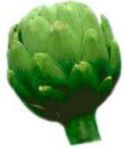 Select globes that are deep green, with a tight leaf formation, and those that feel heavy for their size. A good test of freshness is to press the leaves against each other which should produce a squeaking sound. Browning of the tips can indicate age, but can also indicate frost damage.
Select globes that are deep green, with a tight leaf formation, and those that feel heavy for their size. A good test of freshness is to press the leaves against each other which should produce a squeaking sound. Browning of the tips can indicate age, but can also indicate frost damage.
Fall and winter artichokes may be darker or bronze-tipped or have a whitish, blistered appearance due to exposure to light frost. This is called “winter-kissed.” Look for tender green on the inside of petals. Many consider these frosted artichokes to be the most tender with intense flavor. Avoid artichokes which are wilting, drying or have mold.
Check out my informational web pages on Artichokes and lots of Artichoke Recipes.
Asparagus
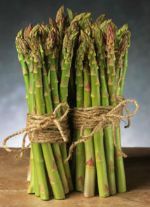 Asparagus is commonly sold in bundles of about a pound, standing upright in a try of water. Select bright green asparagus with closed, compact, firm tips. A rich green color should cover most of the spear. Stalks should be almost as far down as the green extends. Try to buy stalks that are equally thick so they cook evenly. If the tips are slightly wilted, freshen them up by soaking them in cold water. Avoid tips that are open and spread out, moldy or decayed tips, or ribbed spears (spears with up-and-down ridges or that are not approximately round). Those are all signs of aging, and indicate tough asparagus and poor flavor.
Asparagus is commonly sold in bundles of about a pound, standing upright in a try of water. Select bright green asparagus with closed, compact, firm tips. A rich green color should cover most of the spear. Stalks should be almost as far down as the green extends. Try to buy stalks that are equally thick so they cook evenly. If the tips are slightly wilted, freshen them up by soaking them in cold water. Avoid tips that are open and spread out, moldy or decayed tips, or ribbed spears (spears with up-and-down ridges or that are not approximately round). Those are all signs of aging, and indicate tough asparagus and poor flavor.
Storing fresh asparagus – To make sure they keep their freshness, stand asparagus bundles in about 1-inch of water in a jar or shallow tray and keep them in the refrigerator. Cook the asparagus spears with 2 or 3 days of purchase.
Check out my informational web pages on Asparagus and lots of Asparagus Recipes.
Beets
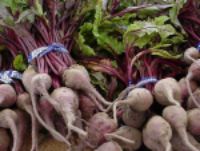 Many beets are sold in bunches with the tops still attached, while others are sold with the tops removed. Look for beets that are firm, round, with a slender tap root (the large main root), a rich, color, and smooth over most of the surface. If beets are bunched, you can judge their freshness fairly accurately by the condition of the tops. Badly wilted or decayed tops indicate a lack of freshness, but the roots may be satisfactory if they are firm.
Many beets are sold in bunches with the tops still attached, while others are sold with the tops removed. Look for beets that are firm, round, with a slender tap root (the large main root), a rich, color, and smooth over most of the surface. If beets are bunched, you can judge their freshness fairly accurately by the condition of the tops. Badly wilted or decayed tops indicate a lack of freshness, but the roots may be satisfactory if they are firm.
Avoid elongated beets with round, scaly areas around the top surface – these will be tough, fibrous, and strong-flavored. Also avoid wilted, flabby beets — they have been exposed to the air too long.
As the beet greens are very nutritious, cook them as you would fresh spinach leaves.
Check out my How To Cook Fresh Beet Greens.
Broccoli
 When purchasing broccoli, select ones where the stalks are tight and firm. Look at the stalk and make sure it’s not tough. The buds should be tightly closed and the leaves are crisp and very green. The little ‘trees’ or florets should be dark green. Also note that if the broccoli tends to have a very strong smell or if the leaves have a slightly yellow color, it can often suggest that it is old. Try and avoid broccoli where the buds are yellow in color.
When purchasing broccoli, select ones where the stalks are tight and firm. Look at the stalk and make sure it’s not tough. The buds should be tightly closed and the leaves are crisp and very green. The little ‘trees’ or florets should be dark green. Also note that if the broccoli tends to have a very strong smell or if the leaves have a slightly yellow color, it can often suggest that it is old. Try and avoid broccoli where the buds are yellow in color.
Check out my informational web page on Broccoli.
Also check out my article on Broccoli Raab/Rapini.
Brussels Sprouts
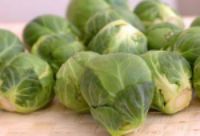 Brussels sprouts develop as enlarged buds on a tall stem, one sprout appearing where each main leaf is attached. The “sprouts” are cut off and, in most cases, are packed in small consumer containers, although some are packed loose, in bulk. Although they are often available about 10 months of the year, peak supplies appear from October through December.
Brussels sprouts develop as enlarged buds on a tall stem, one sprout appearing where each main leaf is attached. The “sprouts” are cut off and, in most cases, are packed in small consumer containers, although some are packed loose, in bulk. Although they are often available about 10 months of the year, peak supplies appear from October through December.
Look for a fresh, bright-green color, tight fitting outer leaves, firm body, and free from blemishes.
Cabbage
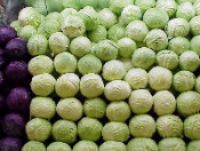 Cabbage leaves should be firm. When selecting, choose only the heads that are compact and firm. They should have fresh, crispy leaves that do not contain any markings or browning, which may be an indication of worm damage. The head should only contain a few loose outer leaves.
Cabbage leaves should be firm. When selecting, choose only the heads that are compact and firm. They should have fresh, crispy leaves that do not contain any markings or browning, which may be an indication of worm damage. The head should only contain a few loose outer leaves.
The coloring of the leaves should reflect the variety you are purchasing. In general, the darker green the leaves the more flavor they have. The stem should be trimmed and look fresh, not dry and cracked. Avoid purchasing pre-cut or shredded cabbage. Once the cabbage is cut it begins to lose its vitamin C content, even if it is tightly packaged or well wrapped.
Check out my informational web page on Cabbage.
Carrots
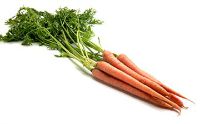 When purchasing carrots, look for firm, plump carrots without rootlets. They should be small, bright orange and smooth, without cracks. Buy carrots in bunches, with their leafy green tops still attached.
When purchasing carrots, look for firm, plump carrots without rootlets. They should be small, bright orange and smooth, without cracks. Buy carrots in bunches, with their leafy green tops still attached.
Carrots lose moisture through their leafy green tops, so if you purchase them this way, remove the tops before wrapping carrots in plastic and storing. Instead of throwing away the tops, which are full of nutrition, try adding them to soups or chopping them and adding to your salads.
Storing fresh carrots: Carrots keep will for weeks in the refrigerator, although you will sacrifice sweetness and flavor if stored too long.
 Cauliflower
Cauliflower
When purchasing cauliflower, look for a clean, creamy white, compact curd in which the bud clusters are not separated. Spotted or dull-colored cauliflower should be avoided, as well as those in which small flowers appear.
Heads that are surrounded by many thick green leaves are better protected and will be fresher. As its size is not related to its quality, choose one that best suits your needs.
 Celery
Celery
Select celery that is light green in color, firm, compact, and well-shaped. The stalk should have a solid, rigid feel and leaflets should be fresh or only slightly wilted. Also look for a glossy surface, stalks of light green or medium green, and mostly green leaflets.
Avoid purchasing celery with bruises or discolored areas on the stalks.
Celery Root/Celeriac
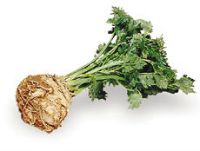 Celery roots can range in size from that of an apple to the size of a small cantaloupe. It is available in winter. Select firm, hard roots that are about baseball size and feel heavy. Often the bigger ones have voids or fibrous cores. If the stems and leaves are attached, they should be fresh and green. Trim side roots and leaves and store in refrigeration at 32oF. with high humidity. This vegetable does not stand up to freezing.
Celery roots can range in size from that of an apple to the size of a small cantaloupe. It is available in winter. Select firm, hard roots that are about baseball size and feel heavy. Often the bigger ones have voids or fibrous cores. If the stems and leaves are attached, they should be fresh and green. Trim side roots and leaves and store in refrigeration at 32oF. with high humidity. This vegetable does not stand up to freezing.
Check out my informational web page on Celeriac (Celery Root).
Corn
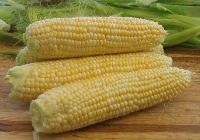 Fully ripe sweet corn has bright green, moist husks. The silk should be stiff, dark and moist. You should be able to feel individual kernels by pressing gently against the husk. Fresh corn, if possible, should be cooked and served the day it is picked or purchased.
Fully ripe sweet corn has bright green, moist husks. The silk should be stiff, dark and moist. You should be able to feel individual kernels by pressing gently against the husk. Fresh corn, if possible, should be cooked and served the day it is picked or purchased.
As soon as corn is picked, its sugar begins is gradual conversion to starch, which reduces the corn’s natural sweetness. Corn will lose 25% or more of its sugar within 25 hours after harvesting it. If for some reason corn is not being used immediately or has been purchased from the supermarket, add sugar to replace that which has been lost. Add one teaspoon sugar for each quart of water.
Check out my informational web pages on Corn and lots of Corn Recipes. Also check out Freezing Corn on the Cob.
 Daikon Radish
Daikon Radish
As with any root crop, look for Chinese radishes that are free of growth cracks and bruises with firm and crisp roots. Chinese radishes keep well in refrigeration if they are placed in a sealed container or plastic bag to maintain high humidity.
Check out my informational web page on Daikon Radish.
Eggplant
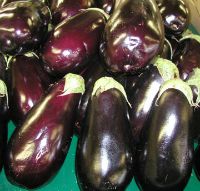 Smaller, immature eggplants are best. Full-size puffy ones may have hard seeds and can be bitter. Choose a firm, smooth-skinned eggplant that is heavy for its size; avoid those with soft or brown spots. Gently push with your thumb or forefinger. If the flesh gives slightly but then bounces back, it is ripe. If the indentation remains, it is overripe and the insides will be mushy. If there is no give, the eggplant was picked too early. Also make sure an eggplant isn’t dry inside, knock on it with your knuckles. If you hear a hollow sound, don’t buy it. NOTE: Whether or not there is an appreciable difference, I don’t know.
Smaller, immature eggplants are best. Full-size puffy ones may have hard seeds and can be bitter. Choose a firm, smooth-skinned eggplant that is heavy for its size; avoid those with soft or brown spots. Gently push with your thumb or forefinger. If the flesh gives slightly but then bounces back, it is ripe. If the indentation remains, it is overripe and the insides will be mushy. If there is no give, the eggplant was picked too early. Also make sure an eggplant isn’t dry inside, knock on it with your knuckles. If you hear a hollow sound, don’t buy it. NOTE: Whether or not there is an appreciable difference, I don’t know.
Check out my informational web page on Eggplant.
Garlic
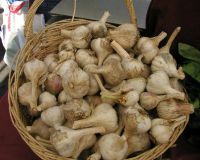 When selecting garlic, it should be big, plump and firm, tight silky skins with its paper-like covering intact, not spongy, soft, or shriveled. Why buy small ones that are a pain to peel? As with all ingredients for cooking, buy the best garlic you can afford.
When selecting garlic, it should be big, plump and firm, tight silky skins with its paper-like covering intact, not spongy, soft, or shriveled. Why buy small ones that are a pain to peel? As with all ingredients for cooking, buy the best garlic you can afford.
Fresh garlic is readily available year round. Garlic is available in forms other than fresh, such as powder, flakes, oil, and puree.
Also remember that a single bulb of garlic usually contains between ten and twenty individual cloves of garlic. The individual cloves are covered with a fine pinkish/purple skin, and the head of cloves is then covered with white papery outer skin.
Check out my informational web pages on Garlic.
Green or String Beans
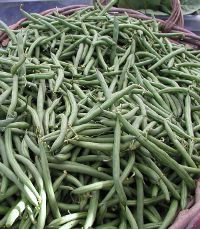 Green beans are available year round, with a peak season of May to October. Green beans are also called string beans and snap beans. Green beans were once called string beans.
Green beans are available year round, with a peak season of May to October. Green beans are also called string beans and snap beans. Green beans were once called string beans.
Today they are string less; just break off the end as you wash them. Leave whole or cut into desired lengths. Choose slender beans that are crisp, bright-colored, and free of blemishes.
Also check out Cooking Green Beans, Are Green Beans Healthy, and Romano Beans/Italian String Beans
Kale
 Kale is overflowing with essential nutrients such as calcium, lutein, iron, and Vitamins A, C, and K. Kale has seven times the beta-carotene of broccoli and ten times more lutein. Kale is rich in chlorophyll and provides much needed fiber so lacking in the daily diet of processed food eating Americans.
Kale is overflowing with essential nutrients such as calcium, lutein, iron, and Vitamins A, C, and K. Kale has seven times the beta-carotene of broccoli and ten times more lutein. Kale is rich in chlorophyll and provides much needed fiber so lacking in the daily diet of processed food eating Americans.
A leafy green vegetable starting to gain widespread attention, kale belongs to the Brassica family, a group that also includes cabbage, collard greens, and Brussels sprouts. Choose kale with small leaves as they will be tender and offer a slightly sweeter taste. Make kale leaves a regular addition to your salads. A sautéed side dish of kale, onions, and garlic drizzled in olive oil is second to none. If you are an avid juicer, you already appreciate the natural liquid vitamin content in plenty of green foods. By all means juice up the kale. One of nature’s best liquid vitamin drinks has never tasted so good.
Check out my informational article on Kale – Healthy Kale and Kale Recipes.
 Mushrooms
Mushrooms
Fresh mushrooms have a firm texture. They are delicate, highly perishable, and must be handled with care; they are sensitive to hot temperatures and rough shipping. Many varieties of fresh mushrooms are seasonal. Watch out for mushrooms that are moldy or soft. You are looking for them to be clean and firm.
Avoid overripe mushrooms (shown by wide-open caps and dark, discolored gills underneath) and those with pitted or seriously discolored caps.
Check out my informational web page on Nutritional Data on Mushrooms.
Onions
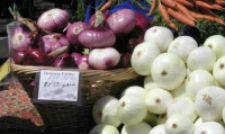 When buying onions, choose those that are heavy for their size with dry, papery skins, and that show no signs of spotting or moistness. Avoid onions that are soft or sprouting. Young onions are sweeter than old ones. They should have absolutely NO SMELL whatever. If they do, they are probably bruised somewhere under the skin and are on their way out.
When buying onions, choose those that are heavy for their size with dry, papery skins, and that show no signs of spotting or moistness. Avoid onions that are soft or sprouting. Young onions are sweeter than old ones. They should have absolutely NO SMELL whatever. If they do, they are probably bruised somewhere under the skin and are on their way out.
A green onion can be classified as a type of scallion. Both can be used interchangeably. True scallions are identified by the fact that the sides of the base are straight, whereas the green onion is usually slightly curved, showing the beginnings of a bulb.
Check out my informational web pages on Onions.
Peas
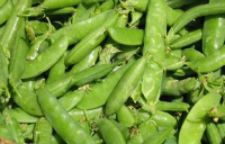 Garden peas are generally available from spring through the beginning of winter. When purchasing garden peas, look for ones whose pods are firm, velvety, and smooth. Their color should be a medium green. Those whose green color is especially light or dark, or those that are yellow, whitish or are speckled with gray, should be avoided. Additionally, do not choose pods that are puffy, water soaked or have mildew residue. The pods should contain peas of sufficient number and size that there is not much empty room in the pod. You can tell this by gently shaking the pod and noticing whether there is a slight rattling sound.
Garden peas are generally available from spring through the beginning of winter. When purchasing garden peas, look for ones whose pods are firm, velvety, and smooth. Their color should be a medium green. Those whose green color is especially light or dark, or those that are yellow, whitish or are speckled with gray, should be avoided. Additionally, do not choose pods that are puffy, water soaked or have mildew residue. The pods should contain peas of sufficient number and size that there is not much empty room in the pod. You can tell this by gently shaking the pod and noticing whether there is a slight rattling sound.
Peas taste best when cooked as soon as possible after picking or purchasing.
Check out Snow Pea/Chinese Pea Pod/Sugar Pea.
Peppers – Bell Peppers and Chile Peppers
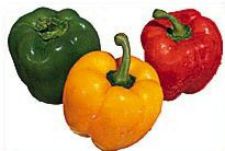 The skin should be smooth, with no bruises or marks on the surface. Sweet green bell-shaped peppers are the most popular garden variety. Left to ripen, they turn red, purple, orange or yellow and gain various levels of sweetness depending on the variety. Chili peppers range in hotness from mild to fiery hot.
The skin should be smooth, with no bruises or marks on the surface. Sweet green bell-shaped peppers are the most popular garden variety. Left to ripen, they turn red, purple, orange or yellow and gain various levels of sweetness depending on the variety. Chili peppers range in hotness from mild to fiery hot.
Check out my informational web page on Chile Peppers and all the Chile Pepper Recipes.
Potatoes
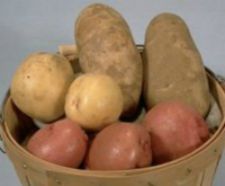 Potatoes should be smooth, well shaped, and unbruised. When selecting potatoes, choose new potatoes for boiling and salads. They have thinner skins and are firmer. With new potatoes, look for firm potatoes that are free from blemishes and sunburn (a green discoloration under the skin). Some amount of skinned surface is normal, but potatoes with large skinned and discolored areas are undesirable. For general-purpose and baking potatoes, look for reasonably smooth, firm potatoes free from blemishes, sunburn, and decay.
Potatoes should be smooth, well shaped, and unbruised. When selecting potatoes, choose new potatoes for boiling and salads. They have thinner skins and are firmer. With new potatoes, look for firm potatoes that are free from blemishes and sunburn (a green discoloration under the skin). Some amount of skinned surface is normal, but potatoes with large skinned and discolored areas are undesirable. For general-purpose and baking potatoes, look for reasonably smooth, firm potatoes free from blemishes, sunburn, and decay.
Potatoes should be kept in a cool, dark place with good ventilation. The ideal storage temperature is 45 to 50 degrees F. At these temperature, the potatoes will keep for several weeks. Do not store potatoes in the refrigerator, as a temperature below 40 degrees F. will cause the potatoes to develop a sweet taste. This is due to the conversion of starch to sugar, which causes potatoes to darken when cooked. If you store potatoes at room temperature, use them within a week or so.
Check out my informational web pages on Potatoes, how to make Perfect Baked Potatoes and Perfect Mashed Potatoes.
Radicchio
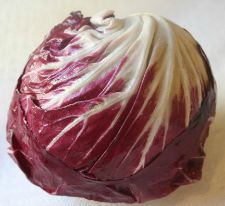 Radicchio has a distinct bittersweet flavor similar to endive. Radicchio is available year round. When selecting radicchio, look for firm white bases. The leaves should have no blemishes, holes or browning at the edge. Choose smaller heads than you usually do for head lettuce.
Radicchio has a distinct bittersweet flavor similar to endive. Radicchio is available year round. When selecting radicchio, look for firm white bases. The leaves should have no blemishes, holes or browning at the edge. Choose smaller heads than you usually do for head lettuce.
Although many folks that are familiar with radicchio view it as a salad component, radicchio lends itself to numerous other culinary possibilities. It is delicious roasted, grilled, braised, sautéed, stir fried, or fried. Raise the bar even higher by combining it with pasta, baking it inside a pizza crust or strudel pastry, or cooking it in a risotto until it manifests into a creamy, melting consistency.
Check out my informational web page on Radicchio.
Spinach
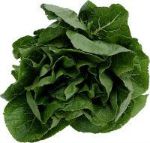
1 pound of fresh spinach leaves will cook down to about 1 cup cooked spinach. for a side dish of cooked spinach, figure 8 ounces raw spinach per serving.
Like all greens, spinach should be washed as soon as you buy it. Loose spinach can be very gritty, so it must be thoroughly rinsed (it can’t be washed enough). It grows in sandy soils that seem to cling to the growing leaves.
The easiest way to wash spinach is to put it into a sink or large container of cold water. Remove stems by twisting or cutting spinach leaves off just above stem line and immerse in water. Swish leaves around, then let them stand for a few minutes while dirt sinks to the bottom. Thoroughly dry by using a salad spinner (my favorite way) or by blotting with paper towels. Wrap in dry paper towels and seal in a plastic bag for storage.
Check out my informational web pages on Spinach and lots of Spinach Recipes.
Squash (Summer)
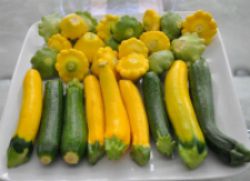 Summer squash includes those varieties which are harvested while still immature and when the entire squash is tender and edible. They include the yellow Crookneck, the large Straight neck, the greenish-white Patty Pan, and the slender green Zucchini. Some of these squash are available at all times of the year.
Summer squash includes those varieties which are harvested while still immature and when the entire squash is tender and edible. They include the yellow Crookneck, the large Straight neck, the greenish-white Patty Pan, and the slender green Zucchini. Some of these squash are available at all times of the year.
Look for squash that are tender and well developed, firm, and fresh-appearing. You can identify a tender squash, because the skin is glossy instead of dull, and it is neither hard nor tough. Avoid stale or over mature squash, which will have a dull appearance and a hard, tough surface. Such squash usually have enlarged seeds and dry, stringy flesh. Also avoid squash with discolored or pitted areas.
Squash (Winter)
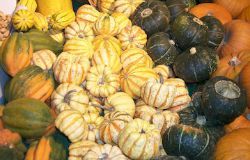 Look for full maturity, indicated by a hard, tough rind. Also look for squash that is heavy for its size (meaning a thick wall and more edible flesh). Slight variations in skin color do not affect flavor.
Look for full maturity, indicated by a hard, tough rind. Also look for squash that is heavy for its size (meaning a thick wall and more edible flesh). Slight variations in skin color do not affect flavor.
Avoid any squash with cuts, punctures, sunken spots, or moldy spots on the rind. These are indications of decay. A tender rind indicates immaturity, which is a sign of poor eating quality in winter squash varieties.
Check out my informational web pages on Squash and lots of Squash Recipes.
Sweet Potato
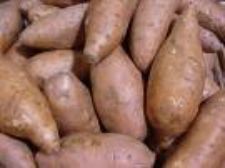 Sweet potatoes should be uniformly light-tan-colored. Look for firm sweet potatoes with smooth, bright, uniformly colored skins, free from signs of decay. Because they are more perishable than white potatoes, extra care should be used in selecting sweet potatoes.
Sweet potatoes should be uniformly light-tan-colored. Look for firm sweet potatoes with smooth, bright, uniformly colored skins, free from signs of decay. Because they are more perishable than white potatoes, extra care should be used in selecting sweet potatoes.
Avoid sweet potatoes with worm holes, cuts, grub injury, or any other defects which penetrate the skin; this causes waste and can readily lead to decay. Even if you cut away the decayed portion, the remainder of the potato flesh may have a bad taste.
Check out my informational web page on Sweet Potato.
Tomatoes
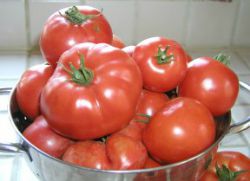 Tomatoes do not develop adequate flavor unless allowed to ripen on the vine. Seek out locally grown tomatoes whenever possible. They may not be as “pretty” as store bought, but beauty, of course, is only skin deep. Fragrance is a better indicator of a good tomato than color. Use your nose and smell the stem end. The stem should retain the garden aroma of the plant itself – if it doesn’t, your tomato will lack flavor and, as far as I’m concerned, will be good only for decoration!
Tomatoes do not develop adequate flavor unless allowed to ripen on the vine. Seek out locally grown tomatoes whenever possible. They may not be as “pretty” as store bought, but beauty, of course, is only skin deep. Fragrance is a better indicator of a good tomato than color. Use your nose and smell the stem end. The stem should retain the garden aroma of the plant itself – if it doesn’t, your tomato will lack flavor and, as far as I’m concerned, will be good only for decoration!
Since fresh tomatoes are summer fare and off-season tomatoes are rarely flavorful, substitute canned Italian plum tomatoes in cooked dishes. Cook for ten minutes to reduce the liquid and enhance the taste.
Check out my informational web pages on Tomatoes and lots of Tomato Recipes and How To Peel Fresh Tomatoes, Metallic Taste in Tomatoes, Oven Slow-Roasted Tomatoes, Dehydrated Tomatoes.
Tomatillos
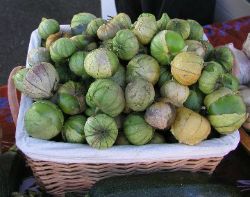 They can range in size from about an inch in diameter to the size of apricots. They are covered by a papery husk which may range from the pale green color of the fruit itself to a light grocery-bag brown. Unlike tomatoes, tomatillos should be firm and free of defects. The husks are inedible and should be removed before use.
They can range in size from about an inch in diameter to the size of apricots. They are covered by a papery husk which may range from the pale green color of the fruit itself to a light grocery-bag brown. Unlike tomatoes, tomatillos should be firm and free of defects. The husks are inedible and should be removed before use.
Choose small tomatillos. They are sweeter than the larger, golf-ball-size ones. The condition of the “husk” is a good indication of the freshness of the fruit. The husk should be light brown and fresh looking (not shriveled and dried).
Check out my informational web Tomatillos and lots of Tomatillo Recipes.
Sources: Information From Blue Goose, Inc. (Education Dept.) – The Buying Guide For Fresh Fruits, Vegetables, Herbs, and Nuts
Categories:
Cooking Articles Cooking Hints & Tips Cooking Lessons - Cooking 101 Vegetable Hints & Tips
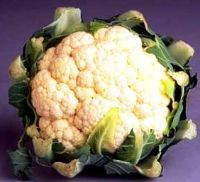 Cauliflower
Cauliflower Celery
Celery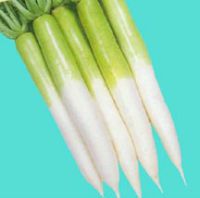 Daikon Radish
Daikon Radish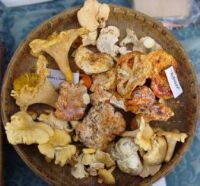 Mushrooms
Mushrooms
One Response to “Vegetable Buying Guide”
Larry Ward
Excellent read!